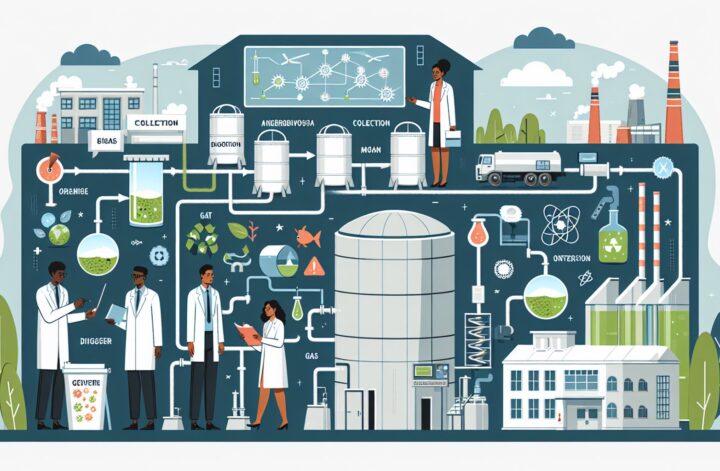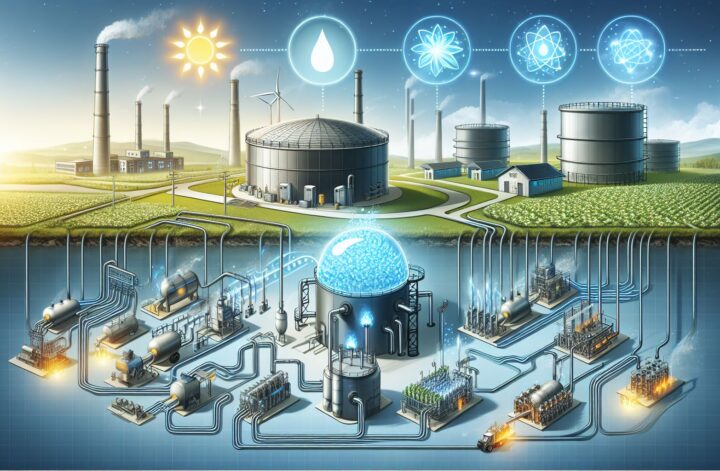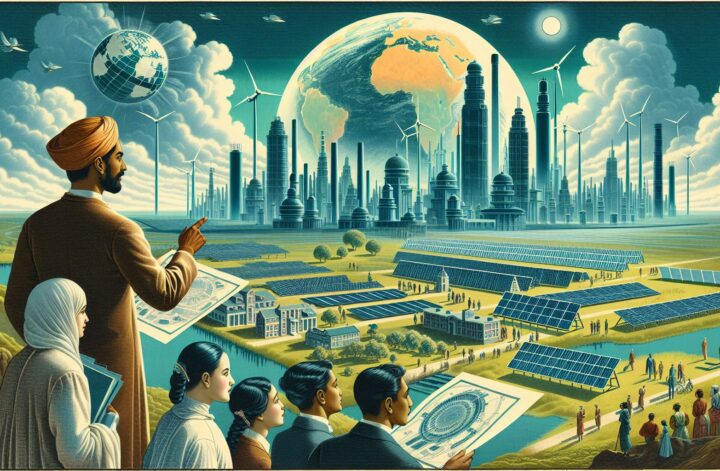With increasing global environmental problems, renewable energy serves as a viable alternative to traditional sources of energy. Traditional energy generation sources like fossil fuels contribute massively to environment degradation and global warming. Therefore, transitioning towards cleaner energy sources now becomes crucial. In this article, the focus will be on biogas production- an important renewable energy source, its associated benefits, and the future prospects of this technology.
An Overview on Biogas Production
Biogas is produced by the breakdown of organic matter in the absence of oxygen, a process known as anaerobic digestion[^1^]. It mainly consists of methane (50% to 75%), carbon dioxide (25% to 50%), and small amounts of other gases like hydrogen, nitrogen, and oxygen. The organic matter that undergoes anaerobic digestion can include animal manure, green waste, food waste, wastewater, and many others. Extracting energy from waste not only provides a renewable energy source but also disposes of waste efficiently and productively.
The Process of Biogas Production
The entire process of biogas production can be categorized into four stages namely, hydrolysis, acidogenesis, acetogenesis, and methanogenesis.
-
Hydrolysis: This is the initial stage where complex organic compounds breakdown into simpler forms by specific microbes, making it easier for other bacteria to act on them.
-
Acidogenesis: Here, the bacteria convert these simple molecules into volatile fatty acids and alcohols.
-
Acetogenesis: Acetate is produced in this stage when bacteria act on the by-products of the previous stage.
-
Methanogenesis: This is the final stage where methane and carbon dioxide is produced from the acetate by methanogens.
Benefits of Biogas Production
Biogas production offers several significant advantages which are as follows:
-
Mitigates Climate Change: Biogas production captures biogenic methane that would be released into the atmosphere otherwise. By replacing the use of fossil fuels with biogas, greenhouse gas emissions can be significantly reduced.
-
Waste Management: Biogas plants divert organic waste from landfills and convert them into renewable energy and nutrient-rich organic fertilizer, often termed as digestate.
-
Energy Generation: Biogas is a reliable source of energy, which can produce electricity and heat via combined heat and power (CHP) systems[^2^].
-
Economic Benefits: The extraction of energy from waste can cost-effectively be produced and supply to the local grid.
Challenges Ahead
However, despite its numerous benefits, biogas production is not without its challenges. While the process is technically matured, economic viability remains an issue. The costs associated with constructing and operating a biogas plant are high, and thus can act as a barrier to its widespread implementation.
Moreover, regulations regarding waste management, emissions, and digestate disposal differ across regions, posing a challenge to the establishment of biogas plants.
These challenges, however, are not insurmountable. With increased government support, public interest, and technological advancements, overcoming them is entirely within reach.
The Road Ahead
Biogas has enormous potential as a renewable, flexible, and decentralized energy source. Interest in this sector is grown, and it has the potential to contribute significantly to sustainable development and climate change mitigation. Additionally, this sector offers promising job opportunities and can play a key role in realizing circular economy principles.
In conclusion, utilizing waste to produce biogas presents a compelling opportunity. With its substantial economic, environmental, and social benefits and opportunities, biogas can play a significant role in a sustainable future.
[^1^]: The Biogas Handbook
[^2^]: Biogas Production and Utilization
(Blog computations: 466 words)




